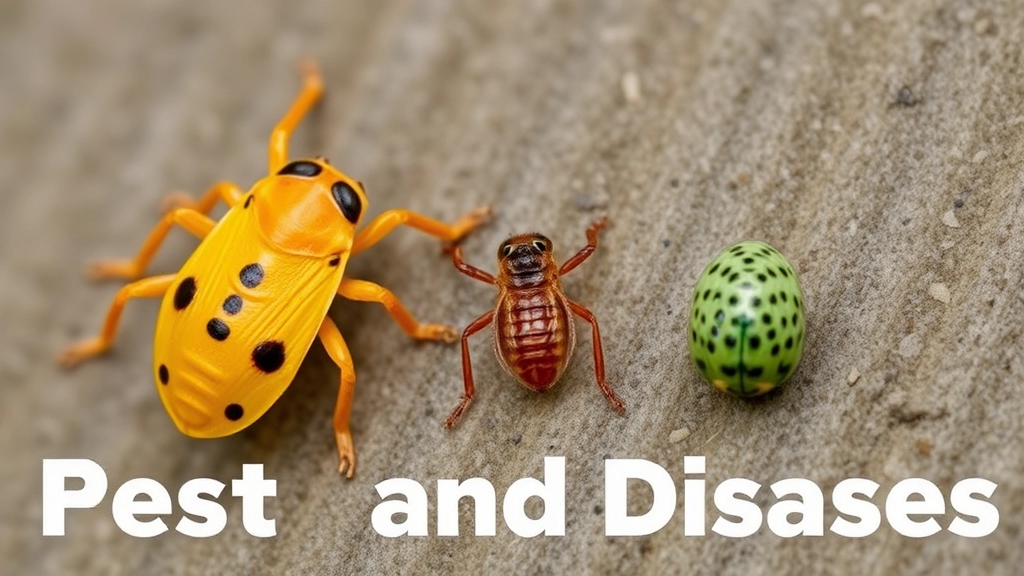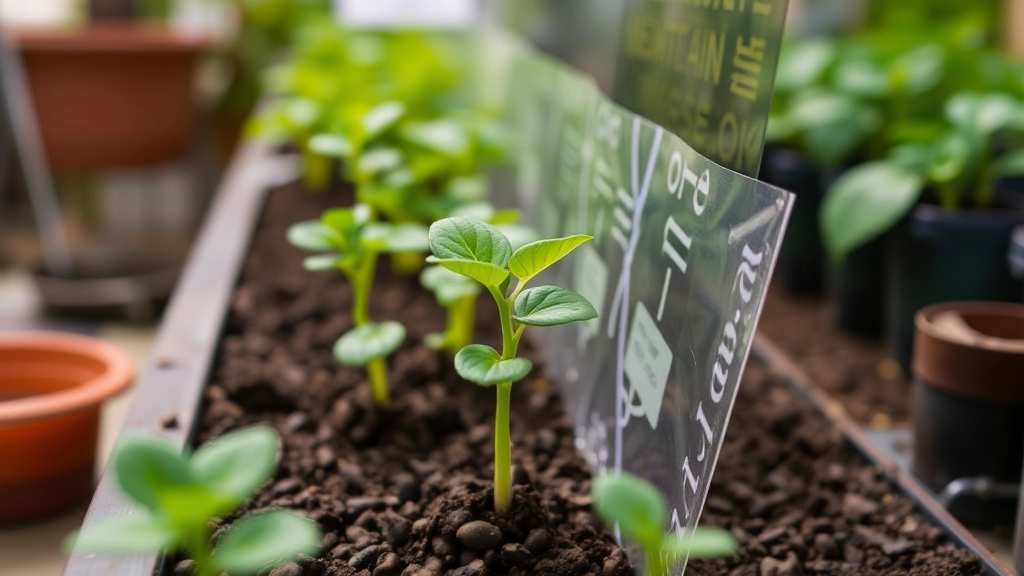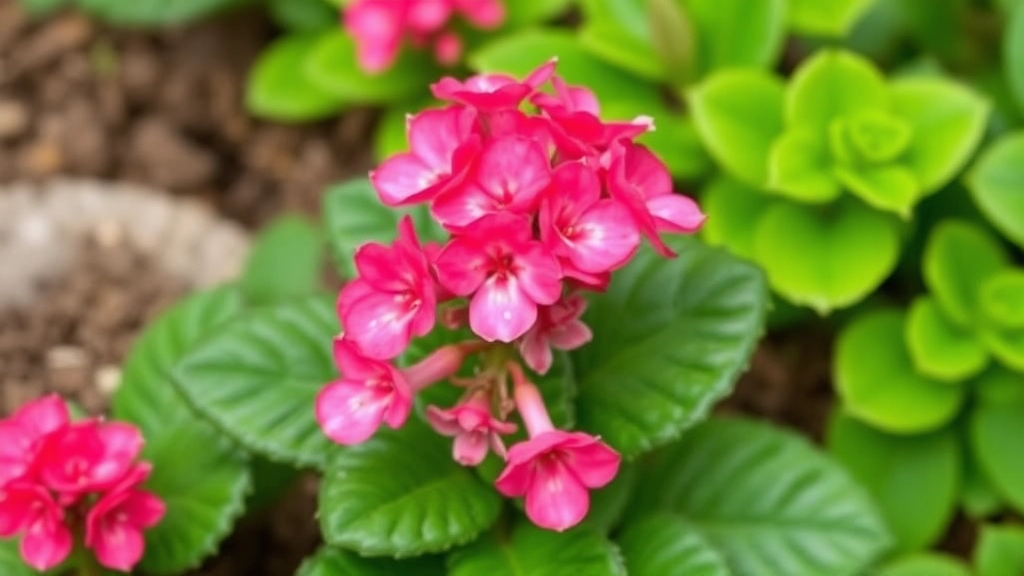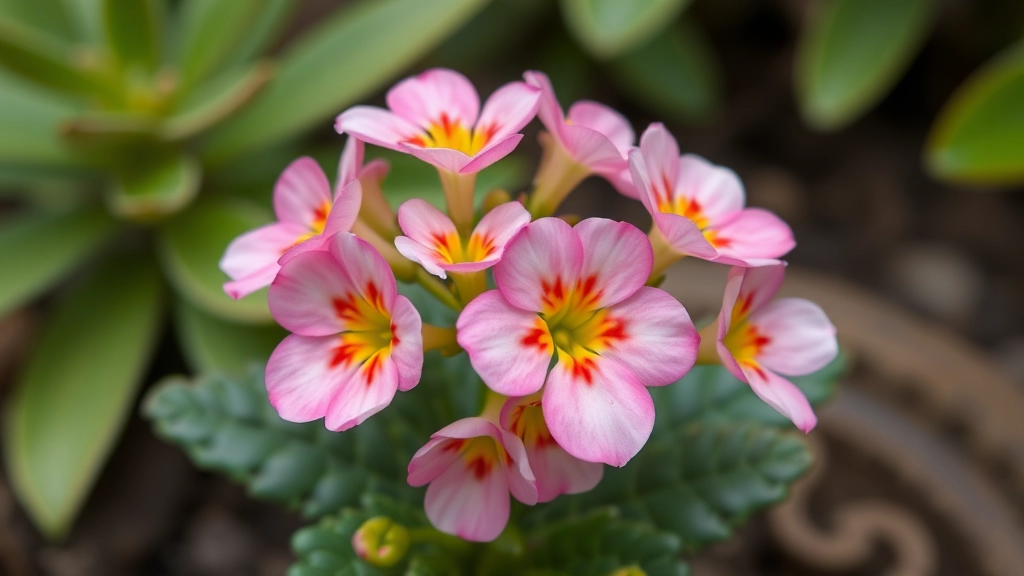Welcome, plant enthusiasts!
Today, we’re diving into the vibrant world of flowering Kalanchoe, specifically the charming Kalanchoe blossfeldiana. This compact beauty, typically growing 20-30cm tall, is a game-changer in the succulent realm. With its stunning clusters of colorful blooms and low-maintenance nature, it’s no wonder this Madagascar native has taken the indoor plant scene by storm.
In this article, we’ll explore everything you need to know about Kalanchoe blossfeldiana – from its ideal growing conditions and care requirements to propagation methods and troubleshooting tips. Whether you’re a seasoned plant parent or a budding enthusiast, you’ll discover why this resilient succulent is a must-have for any indoor garden. So, let’s embark on this colorful journey and uncover the secrets to nurturing your very own thriving Kalanchoe!
Overview of Kalanchoe Blossfeldiana
Hey there, plant lovers! Let’s chat about Kalanchoe Blossfeldiana.
This little beauty is a game-changer in the succulent world.
Native to Madagascar, it’s a tough cookie that’s taken the indoor plant scene by storm.
Why? It’s drop-dead gorgeous and practically bulletproof.
Picture this: clusters of vibrant flowers in reds, pinks, oranges, and yellows.
And get this – they bloom for weeks on end. Talk about a show-off!
But here’s the kicker: it’s not just a pretty face.
Kalanchoe is a survivor. It thrives on neglect. Perfect for busy folks or serial plant killers.
Got a black thumb? No worries. This plant’s got your back.
It’s part of the Crassulaceae family – yeah, those thick-leaved, water-storing champs.
Fun fact: it’s also called Flaming Katy or Christmas Kalanchoe.
Why? It often blooms around the holidays. Instant festive vibes!
But don’t let that fool you. This plant’s a year-round stunner.
Here’s the deal: low maintenance, high impact. That’s Kalanchoe in a nutshell.
Whether you’re a newbie or a green thumb pro, this plant’s a must-have.
So, ready to dive deeper into the world of Kalanchoe Blossfeldiana?
Let’s go! Trust me, you’re in for a treat.
Let’s chat about the perfect setup for your Kalanchoe Blossfeldiana, shall we? These little beauties aren’t too fussy, but they’ve got a few non-negotiables.
First up, light. These guys are sun worshippers, but they’re not into getting scorched. Imagine you’re at the beach – you want that warm, golden glow, not the crispy red look. That’s your Kalanchoe.
– Bright, indirect light is the jackpot
– 4-6 hours of sunlight daily keeps ’em happy
– East or west-facing windows are ideal
Now, temperature. Kalanchoes are like that friend who’s always comfortable – not too hot, not too cold.
– They thrive in 60-85°F (15-29°C)
– Can handle a bit cooler at night, but not below 50°F (10°C)
– Avoid drafts – they’re not fans of sudden temperature changes
Here’s the kicker – these plants aren’t big on humidity. They’re more of a ‘dry heat’ kind of crowd.
– Average room humidity is fine
– No need for misting or humidifiers
– If your bathroom’s like a sauna, maybe skip putting them there
Last but not least, soil. Think well-draining and slightly acidic.
– Cactus or succulent mix works great
– Or mix regular potting soil with sand or perlite
– pH between 5.8 and 6.3 is the sweet spot
Remember, nailing these conditions is like giving your Kalanchoe Blossfeldiana succulent a five-star resort experience. Get these right, and you’re well on your way to a thriving, blooming beauty. It’s not rocket science, just a bit of plant TLC. So, ready to create that perfect Kalanchoe paradise?
Watering and Feeding Requirements
Alright, let’s talk about keeping your Kalanchoe happy and hydrated.
How often should I water my Kalanchoe?
These succulents are pretty chill when it comes to water.
They’re not fans of soggy soil, so less is more.
I usually go by the “stick your finger in the soil” method.
If it’s dry about an inch down, it’s time for a drink.
In summer, this might be once a week.
Winter? Maybe every two weeks.
The key? Let the soil dry out between waterings.
What about feeding?
Kalanchoes aren’t big eaters, but they appreciate a snack now and then.
I use a balanced, water-soluble fertiliser.
Half-strength is plenty.
Feed them every month during spring and summer.
Give them a break in autumn and winter.
Pro tip: Overfeeding can lead to leggy growth and fewer flowers.
Common watering mistakes to avoid:
- Watering on a strict schedule (plants don’t wear watches)
- Using cold water (room temp is best)
- Watering the leaves instead of the soil
- Letting water sit in the saucer (hello, root rot)
Remember, Kalanchoes are succulents at heart.
They’re built to handle dry spells.
When in doubt, it’s better to underwater than overwater.
Your Kalanchoe will tell you if it’s thirsty – look for slightly droopy leaves.
Keep an eye out, and you’ll soon get a feel for what your plant needs.
Common Pests and Diseases

Let’s talk about the nasty critters and pesky problems that can mess with your Kalanchoe Blossfeldiana. Trust me, I’ve seen my fair share of plant troubles, and these guys are no exception.
Bugs That Bug Your Kalanchoe
- Mealybugs: These little cotton-ball lookalikes love to suck the life out of your plant. Spot ’em early, and you’re golden.
- Spider mites: Tiny terrorists that leave webs and cause leaf damage. They’re a pain, but not unbeatable.
- Aphids: Green, soft-bodied suckers that cluster on new growth. They’re like uninvited guests at a plant party.
Diseases That’ll Make You Dizzy
- Root rot: Overwatering’s evil twin. It’s like drowning your plant from the roots up.
- Powdery mildew: A white, powdery coating on leaves. Looks like your plant’s been dusted with flour.
- Leaf spot: Brown or black spots on Kalanchoe Blossfeldiana leaves. It’s like acne for plants, but way less fun.
Dealing with the Drama
Here’s the deal: prevention is your best mate. Keep your Kalanchoe happy, and it’ll be tougher than a two-dollar steak. But if trouble strikes, don’t panic. Most issues can be sorted with a bit of TLC and some basic treatments.
For bugs, a good spray down with insecticidal soap usually does the trick. Diseases? Often, it’s about adjusting your care routine. Less water, more air flow, that sort of thing.
Remember, a healthy Kalanchoe is a resilient Kalanchoe. Keep an eye out for any weird changes, and you’ll nip most problems in the bud. Literally.
So, there you have it. The lowdown on Kalanchoe Blossfeldiana’s common pests and diseases. Stay vigilant, and your plant will thank you with those gorgeous Kalanchoe Blossfeldiana flowering period blooms we all love.
Pruning and Maintenance Tips
Alright, let’s chat about keeping your Kalanchoe Blossfeldiana looking sharp.
Pruning isn’t just for show – it’s crucial for your plant’s health.
Here’s the deal:
- Snip off dead or yellowing leaves as soon as you spot them
- After flowering, cut back the stems to about 10cm
- Pinch out growing tips to encourage bushiness
But here’s a pro tip: always use clean, sharp scissors.
Why? It prevents disease spread and gives clean cuts.
Now, maintenance isn’t just about pruning.
You’ve got to keep an eye on the overall health:
- Dust the leaves regularly – it helps with photosynthesis
- Rotate the pot every week for even growth
- Check for pests weekly – early detection is key
Remember, Kalanchoe likes it snug in its pot.
But if it’s bursting out, it’s time for a size up.
Repot in spring, using fresh, well-draining soil.
Here’s a quick maintenance schedule:
- Daily: Check moisture levels
- Weekly: Dust leaves, rotate pot
- Monthly: Prune as needed, check for repotting
Stick to this, and your Kalanchoe will be thriving in no time.
Propagation Methods

Alright, let’s dive into how you can multiply your Kalanchoe Blossfeldiana without breaking a sweat. Trust me, it’s easier than you might think!
Leaf Cuttings: The Quick and Dirty Method
Ever wondered if you could grow a whole new plant from just a leaf? With Kalanchoe, you absolutely can! Here’s how:
- Snip off a healthy leaf
- Let it dry for a day or two (this helps prevent rotting)
- Stick it in some well-draining soil
- Keep it moist but not soaking
- Wait for tiny plantlets to appear at the base
It’s like magic, but it’s just plant science doing its thing.
Stem Cuttings: The Classic Approach
If you’re after faster results, stem cuttings are your best bet. Here’s the lowdown:
- Cut a 3-4 inch stem just below a leaf node
- Remove the lower leaves
- Let it callous over for a day
- Plant in moist, well-draining soil
- Keep it warm and humid
Before you know it, you’ll have roots and new growth. It’s like watching your plant family grow right before your eyes!
Division: For the Impatient Gardener
Got a big, bushy Kalanchoe? Division might be your jam:
- Gently remove the plant from its pot
- Shake off excess soil
- Carefully separate the roots into smaller clumps
- Replant each section in its own pot
Boom! Instant new plants. It’s like getting free Kalanchoes, and who doesn’t love that?
Seeds: The Long Game
If you’re feeling patient and adventurous, try growing from Kalanchoe Blossfeldiana seeds:
- Collect seeds from spent flowers
- Sow them on top of moist, sterile soil
- Cover the container with plastic wrap
- Place in a warm, bright spot
- Keep soil moist but not waterlogged
It takes time, but watching those tiny seeds grow into full plants is pretty darn satisfying.
Remember, whichever method you choose, Kalanchoe Blossfeldiana cuttings propagation is all about patience and a bit of TLC. Before you know it, you’ll be surrounded by these beautiful, blooming beauties. And who knows? You might even become the go-to Kalanchoe guru among your friends!
Seasonal Care Guidelines for Kalanchoe Blossfeldiana
Ever wonder how to keep your Kalanchoe looking fab all year round?
Let’s break it down, season by season.
Spring: Time to Wake Up!
- Gradually increase watering as days get longer
- Start feeding with a balanced fertiliser
- Move to a brighter spot, but avoid direct sun
Summer: Livin’ It Up
- Water more frequently, but don’t overdo it
- Keep an eye out for pests – they love the warmth too
- Provide some shade during the hottest parts of the day
Autumn: Prepping for a Snooze
- Reduce watering and feeding
- Move to a cooler spot to encourage blooming
- Trim any leggy growth
Winter: Chill Time
- Water sparingly – once every 2-3 weeks is plenty
- Skip the fertiliser
- Keep away from cold drafts and radiators
Remember, Kalanchoe’s a tough cookie, but it still needs a bit of TLC.
By tweaking your care routine with the seasons, you’ll keep your plant happy and healthy all year.
Got any Kalanchoe care hacks? Drop ’em in the comments!
Benefits of Growing Kalanchoe Blossfeldiana

Let’s chat about why Kalanchoe Blossfeldiana is a game-changer for your indoor garden. Trust me, I’ve been there – looking for that perfect plant that doesn’t need a PhD in horticulture to keep alive. Well, this little beauty ticks all the boxes.
Easy-peasy maintenance
First off, it’s a breeze to look after. You don’t need to be a plant whisperer to keep this one happy. Water it when the soil’s dry, give it some light, and you’re golden. It’s like having a low-maintenance friend who’s always there to brighten up your day.
Colour pop all year round
Now, let’s talk about those flowers. Flowering Kalanchoe Blossfeldiana is like that friend who’s always dressed to impress. It blooms for ages, giving you a pop of colour when everything else looks a bit drab. Red, pink, orange, yellow – you name it, this plant’s got it.
Air purifier on duty
But it’s not just a pretty face. This plant’s working overtime to clean your air. It’s like having a mini air purifier that doesn’t need plugging in. How’s that for multitasking?
Stress buster
And here’s the kicker – it’s a stress buster. After a long day of hustling, coming home to this vibrant little number can really lift your spirits. It’s like a shot of positivity in plant form.
Space-saving superstar
Got a small flat? No worries. Kalanchoe Blossfeldiana doesn’t need much space to thrive. It’s perfect for that empty corner on your desk or that bare windowsill crying out for some life.
So, there you have it. Kalanchoe Blossfeldiana succulent isn’t just a plant, it’s a lifestyle upgrade. It’s low-maintenance, looks great, cleans your air, boosts your mood, and fits anywhere. What’s not to love? Give it a go, and you might just find yourself with a new obsession. Trust me, growing Kalanchoe Blossfeldiana is a decision you won’t regret.
Choosing the Right Pot and Soil
Picking the perfect pot and soil for your Kalanchoe Blossfeldiana? Let’s chat about it.
First things first: drainage is key.
You want a pot with holes at the bottom. Trust me, it’s a game-changer.
Why? It stops water from hanging around and causing root rot.
Now, size matters. Go for a pot that’s just a bit bigger than the plant’s root ball.
Too big? Your Kalanchoe might get lost in there.
Too small? It’ll feel cramped and unhappy.
As for material, terracotta’s my go-to. It’s breathable and helps prevent overwatering.
But plastic works too if you’re careful with watering.
Soil-wise, think well-draining and light.
A mix of potting soil, perlite, and some sand does the trick.
This combo gives your Kalanchoe the perfect balance of moisture and air.
Avoid heavy soils that hold too much water. They’re bad news for these succulents.
Pro tip: Add a layer of gravel at the bottom of the pot for extra drainage.
Remember, the right pot and soil set the stage for a thriving Kalanchoe Blossfeldiana.
It’s like giving your plant the perfect home to grow and show off those beautiful blooms.
Troubleshooting Common Issues
Let’s face it, even the toughest plants can throw us a curveball now and then. Kalanchoe Blossfeldiana is no exception. But don’t sweat it – I’ve got your back with some quick fixes for the most common hiccups you might encounter.
Yellowing Leaves: What’s the Deal?
Ever walked up to your Kalanchoe and thought, “Why’s it looking a bit yellow around the gills?” Here’s the scoop:
- Overwatering: These succulents hate wet feet. Ease up on the H2O and let the soil dry out between waterings.
- Nutrient deficiency: Maybe it’s time for a snack? Try a balanced, water-soluble fertiliser.
- Too much sun: Yep, even sun-lovers can get a bit crispy. Move it to a spot with bright, indirect light.
Droopy Leaves: The Sad Plant Syndrome
If your Kalanchoe’s looking a bit down in the dumps, it might be:
- Thirsty: Give it a good drink, but don’t go overboard.
- Cold: These guys aren’t fans of chilly drafts. Find a cosier spot.
- Root rot: Check the roots – if they’re mushy, you’ve got a problem. Time for some surgery and fresh soil.
Flower Power Failure
No blooms? No worries. Here’s how to get those flowers popping:
- Light it up: Make sure it’s getting enough bright, indirect light.
- Cool it down: A bit of a chill (around 12-14°C) for a few weeks can kickstart flowering.
- Feed it right: Use a fertiliser high in phosphorus to encourage blooming.
Pest Problems: Uninvited Guests
Spotted some creepy crawlies? Here’s how to show them the door:
- Mealybugs: Dab them with a cotton swab soaked in rubbing alcohol.
- Spider mites: A good shower and some neem oil should do the trick.
- Scale: Scrape ’em off gently with a soft brush or your fingernail.
Remember, the key to keeping your Kalanchoe Blossfeldiana happy is to keep an eye on it. Catch these issues early, and you’ll be golden. And if all else fails? Don’t be afraid to start fresh with a cutting. These plants are tough cookies – they’ll bounce back before you know it.
FAQs about Kalanchoe Blossfeldiana
How tall does Kalanchoe Blossfeldiana typically grow?
Kalanchoe Blossfeldiana usually grows to be about 20-30cm tall. It’s a compact plant, perfect for small spaces or as a tabletop decoration.
How often should I water my Kalanchoe Blossfeldiana?
Water your Kalanchoe when the top inch of soil feels dry. This is typically once a week in summer and every 2-3 weeks in winter. Remember, it’s better to underwater than overwater these succulents.
Can Kalanchoe Blossfeldiana survive outdoors?
Yes, but only in warm climates (USDA zones 10-12). They can be placed outdoors during summer in cooler regions but must be brought inside before temperatures drop below 50°F (10°C).
Why isn’t my Kalanchoe Blossfeldiana flowering?
Lack of flowering could be due to insufficient light, improper temperature, or inadequate rest period. Ensure it gets bright, indirect light and experiences cooler temperatures (around 50-55°F) for about six weeks to trigger blooming.
Is Kalanchoe Blossfeldiana toxic to pets?
Yes, Kalanchoe Blossfeldiana is toxic to cats, dogs, and other pets if ingested. It’s best to keep this plant out of reach of curious pets.
How do I propagate my Kalanchoe Blossfeldiana?
You can easily propagate Kalanchoe through leaf or stem cuttings. Allow the cutting to callous over for a day or two, then plant in well-draining soil. Keep the soil slightly moist until roots develop.
What type of soil is best for Kalanchoe Blossfeldiana?
Use a well-draining potting mix designed for succulents or cacti. You can also make your own by mixing regular potting soil with perlite or sand to improve drainage.
How often should I fertilize my Kalanchoe Blossfeldiana?
Fertilize monthly during the growing season (spring and summer) with a balanced, water-soluble fertilizer diluted to half strength. Avoid fertilizing during the fall and winter months.
References
-
Missouri Botanical Garden – Kalanchoe blossfeldiana Kalanchoe blossfeldiana – Plant Finder

